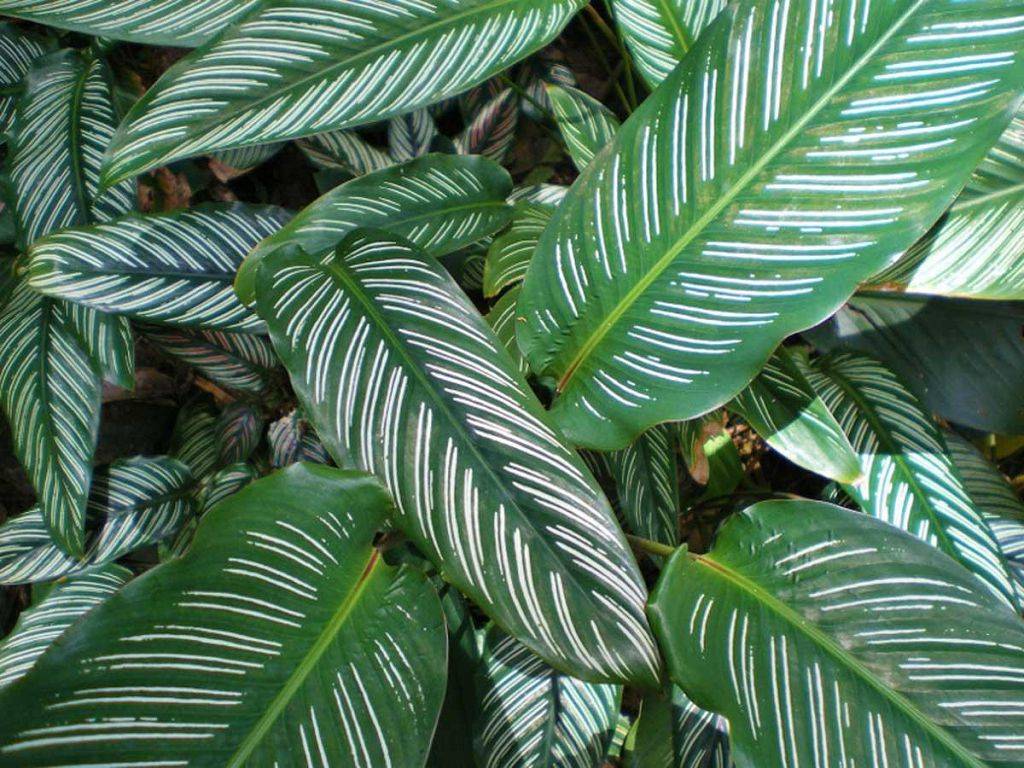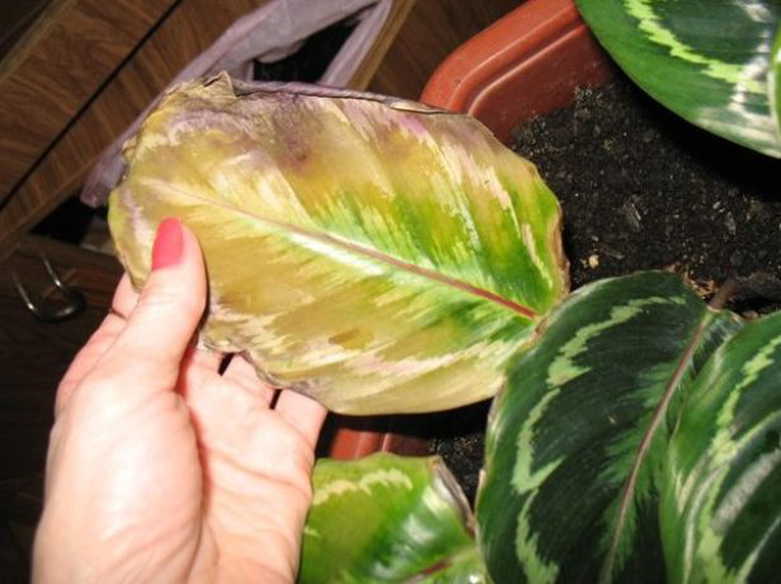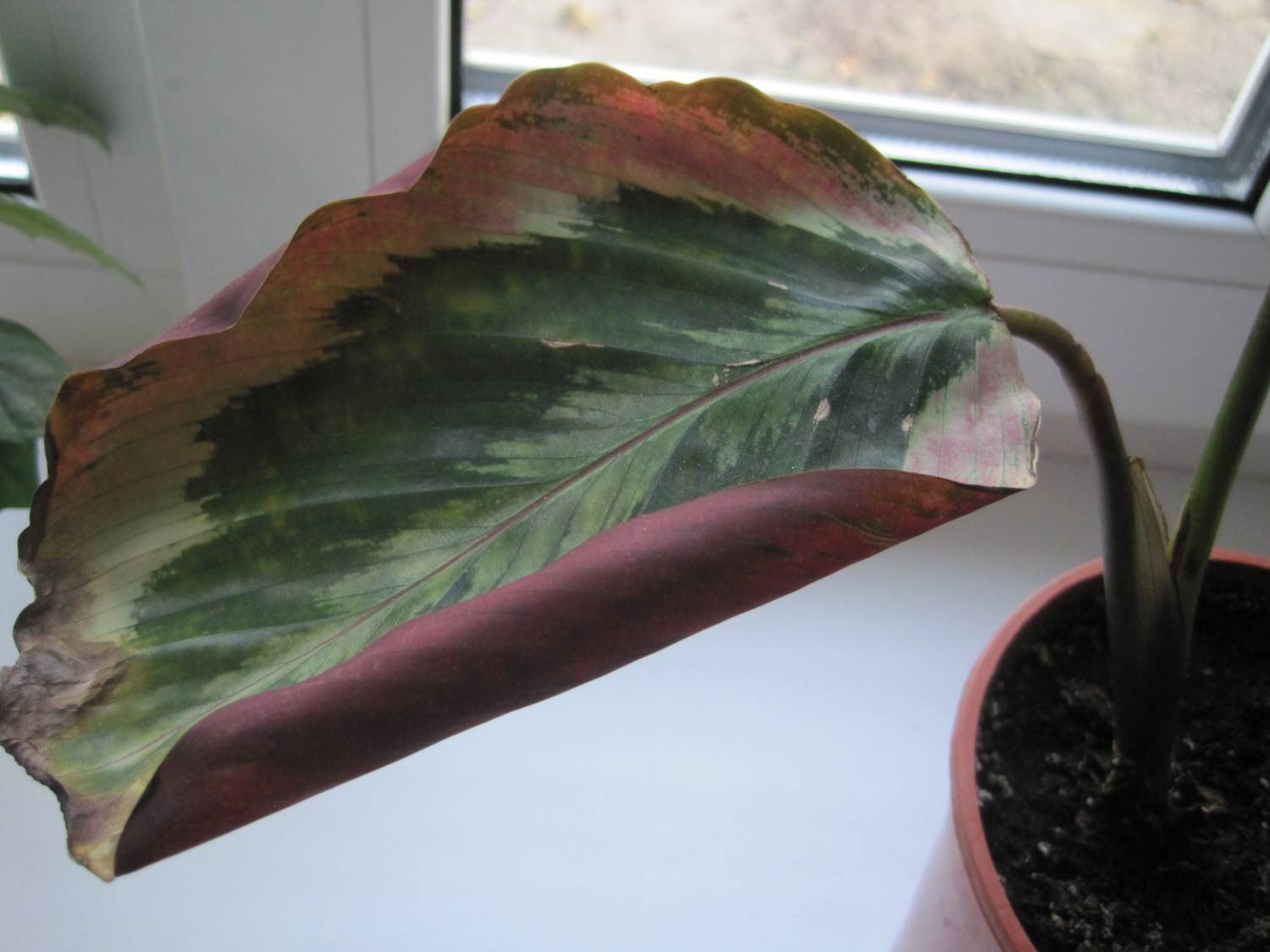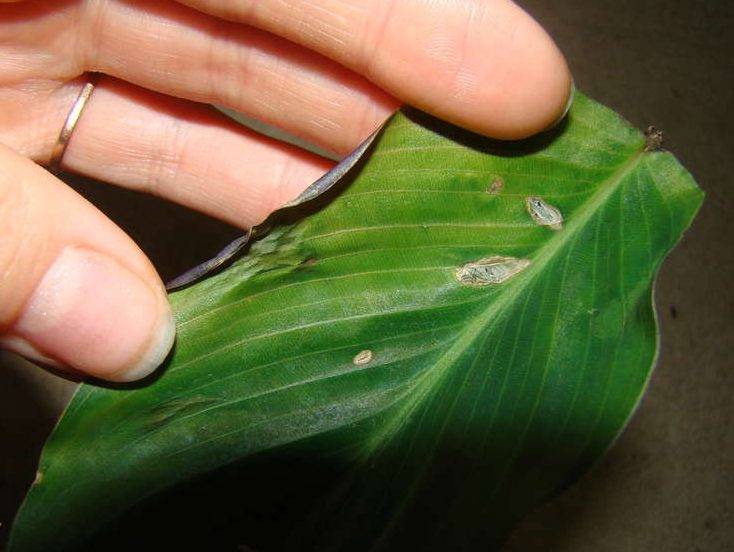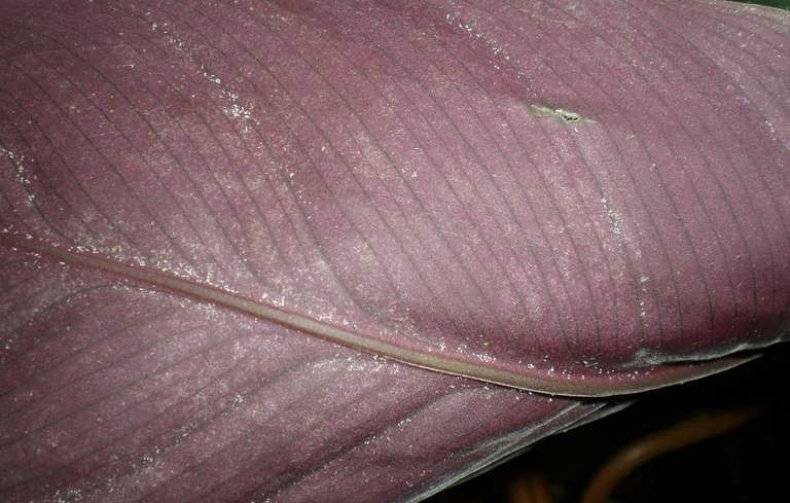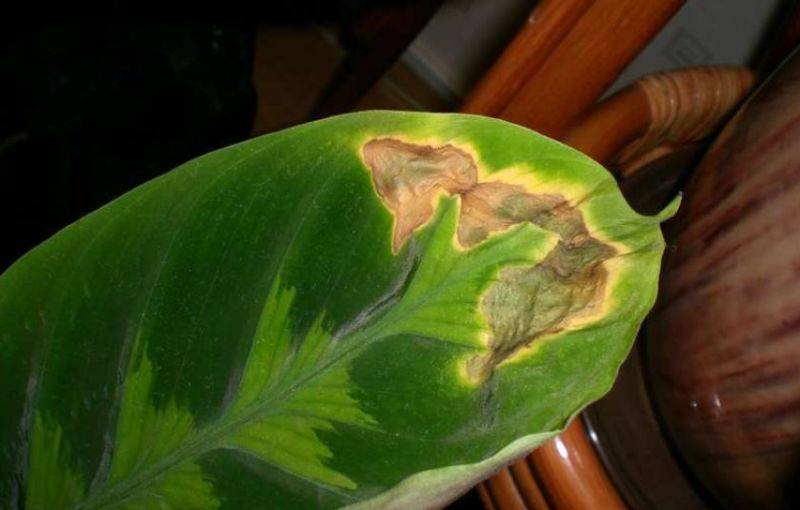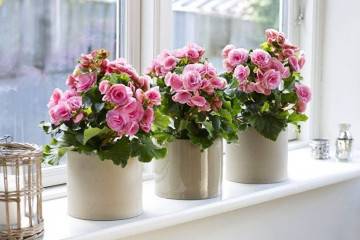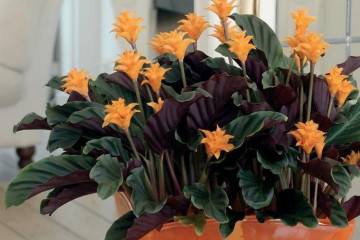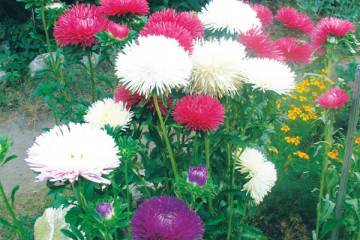Calathea - plant diseases and pests
Content:
The brightest representative of the Marantov family - Calathea - appeared on the windowsills of flower growers from Central and South America, where the plant is found everywhere and has been used for weaving baskets since antiquity. Amazing patterned calathea leaves are a decoration of any home and office, which is very much loved for its exceptional endurance.
Brief description of the flower
It is a herbaceous plant with a superficial type of root system, from which numerous green shoots are formed. It forms rosettes from wide and long leaves.
The length of one leaf plate, together with a succulent petiole, can reach 40 cm.The bushes themselves usually do not exceed 90 cm in height. Usually, calatheas bloom very inconspicuously, but saffron and Varshchevich are distinguished by their pink, orange and white bracts.
Why a plant can get sick
The following conditions of detention are critical for calathea, in case of violation of which certain diseases develop:
- the lighting is bright but not direct. You cannot put the pot on the south window, only at a certain distance, but it is better to transfer it to the north or east window sill;
- the temperature is required at least 16 ° С, drafts are not allowed;
- watering is regular, but the top layer of the soil must be dry. The water temperature is required 2-3 ° above room temperature;
- all varieties, except those that have velvety pubescence of the leaves, need daily spraying with warm water, without which the leaves begin to curl;
- from April to August every 2 weeks you need to apply fertilizer for ornamental deciduous plants, preventing them from drying out without food.
Drops the leaves
Loss of leaves is a natural process that accompanies plant growth. Old leaves are replaced by new ones gradually, which usually happens very gradually. But the simultaneous loss of several leaves at once is an alarming symptom.
It is necessary to remove the calathea from the pot, gently shake the soil from the roots and inspect them. All dark brown, soft and decaying areas are excised to healthy tissue. For several hours, the plant is immersed in roots in a solution of fungicide or potassium permanganate, after which it is immediately transplanted into a new substrate, resuming moderate watering after 2-3 days.
For 1-2 weeks after transplanting, the pot is kept in a greenhouse, creating the foliage as comfortable as possible in a humid environment. Top dressing can be resumed after a month with successful treatment.
Calathea: leaves dry around the edges, what to do
If leaves curl on a calathea plant, what needs to be done depends on the causes of the disease. Such a picture is characteristic of violations of the rules of agricultural technology. Most likely, the reason for the appearance of yellow spots on the leaves is:
- hypothermia;
- overdose of mineral fertilizers;
- bay or dry soil.
The soil in the pot should always be slightly damp, the air temperature in the room should be warm and without cold drafts. Fertilize the flower only in the warm season and with highly diluted fertilizers. If the leaves turn yellow on the calathea flower, then by restoring proper care, you can return its attractiveness.
Leaves or tips dry, curl and wrinkle
The simultaneous rolling of the edges of the leaves into a tube and lifting them up indicates that there is not enough moisture in the air and soil. It is necessary to resume watering, as well as daily spraying, knowing why calathea leaves curl and dry.
Leaves dropped at any time of the day show that the soil is waterlogged, the process of root decay has begun. This happens when the substrate is not suitable for the plant, it is too heavy, there are not enough rippers in it, and the air does not flow in sufficient quantities to the roots. It is necessary to change the soil by adding vermiculite, coarse sand, charcoal to the new soil.
Florists are often interested in why the leaves of the calathea turn yellow. The appearance of yellow and then dry and wrinkled areas on the leaves indicates that direct sunlight is falling on them and causing systematic burns. It is important to rearrange the pot as soon as possible away from the sun in partial shade to prevent the foliage from curling.
Roots rot
It is easy to determine that something is wrong with the roots. A typical symptom is the appearance of pronounced black spots on leaf plates, petioles. They gradually increase in size. New shoots that have just appeared already have black tips. If the tips of the leaves dry on the calathea flower, then measures must be taken urgently.
Immediate resuscitation measures should be taken - remove the plant from the soil, examine its roots, remove all rotten areas, treat with a fungicide and plant in new soil, be sure to disinfect the pot.
Wrinkled trunk
The trunk is formed in adult kalata, it remains in place of dead old leaves. In a healthy plant, it is resilient and has the same color as the leaves. There should be no yellow, black, brown, wet and sticky spots on it.
Shrinking of the trunk is a sign indicating the imminent death of a plant; it can be twisted at a non-standard angle. This happens when most of the roots have rotted, and the aerial part has ceased to receive nutrients and water. It is difficult to save such a badly damaged calathea. Usually, in this case, the crown is cut off and rooted, since the roots can no longer be saved.
Calathea: diseases and pests that cause rot
Rotting areas on the green parts of the calathea appear as a sign of a disease. Like other indoor plants, this flower can suffer from fungal diseases, which often develop actively in high humidity conditions. That is why it is so important for preventive purposes to regularly inspect the crown and carry out preventive treatments with fungicidal preparations. Bona forte, glyokladin, discor, and maxim have proven themselves well.
Calathea looks bad: pests
The following types of common pests of indoor plants can cause the greatest damage to kalatea.
On the seamy side of the sheet, stationary brown spots up to 2-3 mm in diameter can be seen. This is how the scale insect manifests itself, which sucks juices from the green parts of indoor plants. Another characteristic symptom is a sticky layer on which soot fungus easily settles. The most effective drug against the pest is karbofos.
Spider mites and other mites actively settle on indoor flowers if the room humidity is low. If a spider mite can be seen by the thin cobwebs in the axils of the leaves, then the appearance of other mites can sometimes be guessed by the rapidly drying up leaves for no apparent reason. Only three-time treatments (every 5 days) with acaricides, for example, actelik, help from these pests.
With regular and too abundant watering, the roots of the calathea often rot. The pot creates an ideal habitat for thrips. Their appearance is signaled by characteristic whitish spots on the outer surface of the leaf plates. Gradually, leaf tissues dry out and crumble, holes appear. The attractiveness of the affected plant is rapidly deteriorating.
The most effective and affordable drug against the pest is considered to be Aktara, which is used for watering and spraying at least 3 times with an interval of 5 days.
It is quite possible to preserve an attractive look in one of the most popular indoor flowers, knowing what kind of home care Calathea requires, about diseases and their treatment. Subject to proper agricultural technology, spots on the leaves of the calathea will not appear.
